Local Population and Dwelling Stock Estimates and Forecasts
Cambridgeshire County Council’s locally produced population and dwelling stock estimates and forecasts are published here and are available for the five districts of Cambridgeshire: Cambridge City, East Cambridgeshire, Fenland, Huntingdonshire and South Cambridgeshire, as well as for Peterborough Unitary Authority.
Cambridgeshire County Council’s population and dwelling stock estimates are available for districts, wards and parishes. They present the most recent estimates of the size of the usual resident population and number of dwellings at mid-year. The estimates are produced using local data sources, such as health statistics, school rolls, electoral registers and housing completions data.
Cambridgeshire County Council’s population and dwelling stock forecasts are available for districts and wards and extend to 2041. They use the most recent mid-year population and dwelling stock estimates as a starting point. The forecasts are ‘policy-led’, so that they are consistent with planned levels of house-building, informed by the most recent housing trajectories published by each local authority, with some interpolation and extrapolation by Cambridgeshire County Council. Recent historic demographic trends in births, deaths and migration are also taken into account in the population forecasts.
The mid-2023 population and dwelling stock estimates and 2023-based population and dwelling stock forecasts are the latest available.
- Cambridgeshire’s population is forecast to grow by an annualised average of 1.0% per year between 2023 and 2041 Population increase are forecast to be higher in the first decade, with annualised average growth of 1.3% per year between 2023 and 2031. Overall, Cambridgeshire’s population is forecast to grow by 17.9% between 2023 and 2041, to reach a population of just over 827 thousand by 2041.
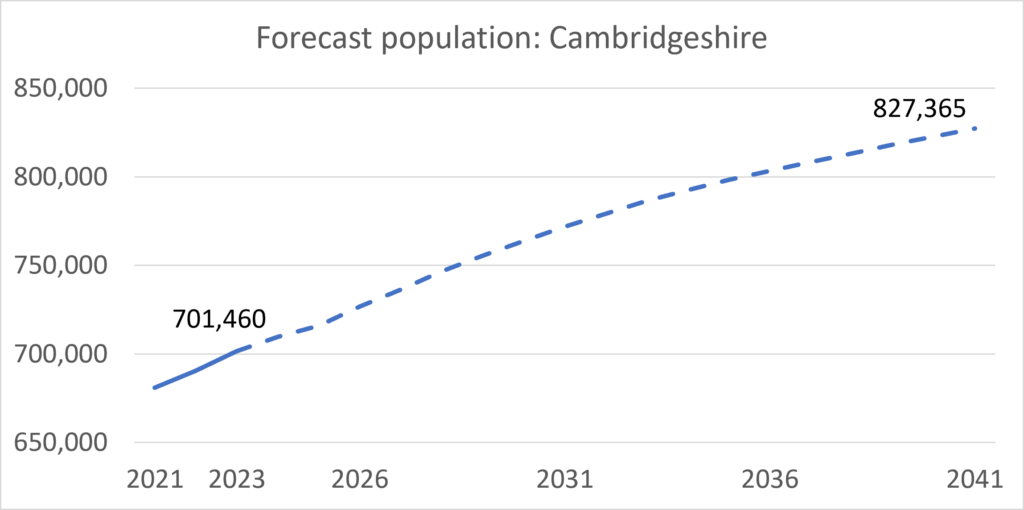
- For Cambridgeshire and Peterborough, population is forecast to grow by an annualised average of 0.9% per year between 2023 and 2041. Population increases are forecast to be higher in the first decade of the forecast period, with annualised average growth of 1.2% per year between 2023 and 2031. Cambridgeshire and Peterborough’s population is forecast to grow by 16.8% between 2023 and 2041, to reach a population of almost 1.08 million by 2041.
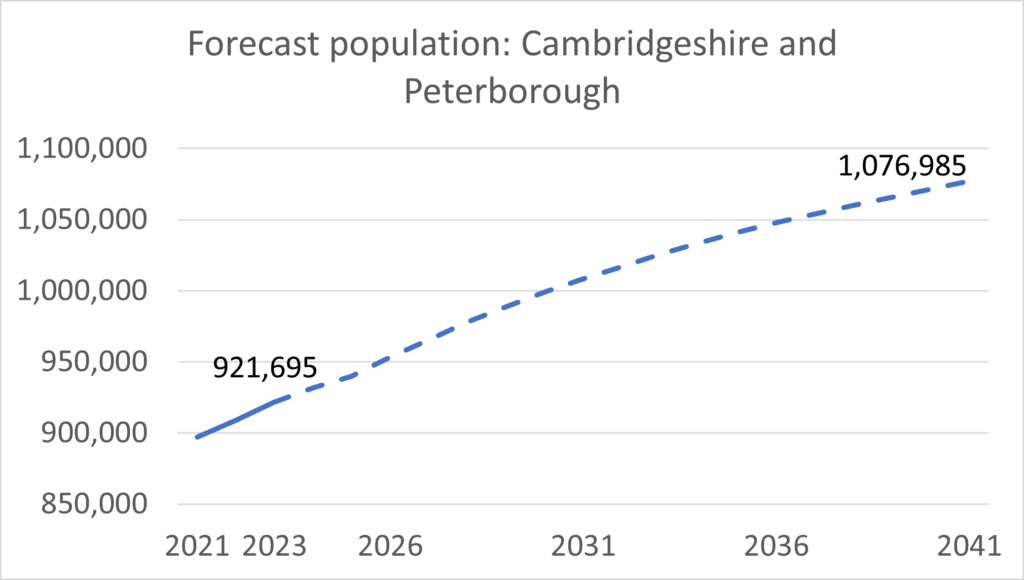
Almost 70 thousand new dwellings are forecast to be completed between 2023 and 2041 in Cambridgeshire, a rise in total dwelling stock of 22.8%.
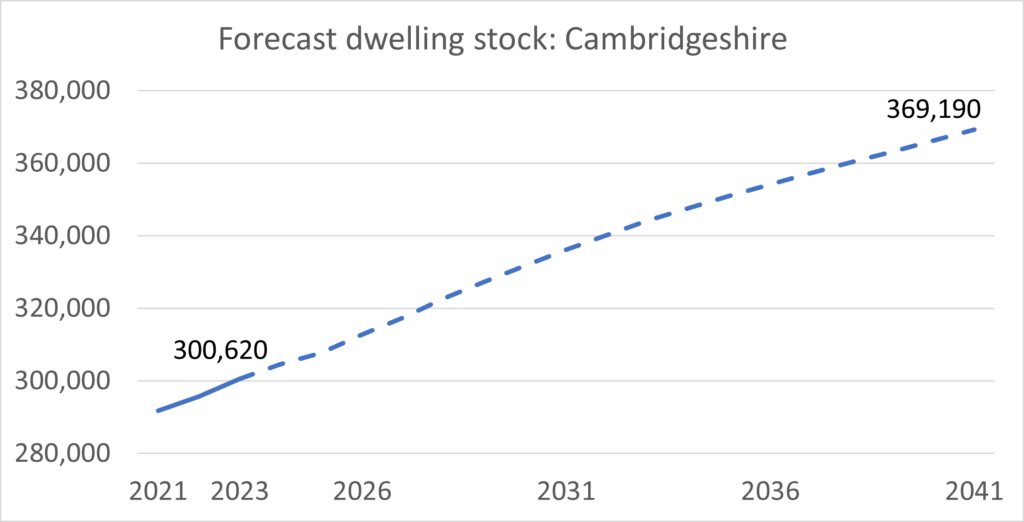
In Cambridgeshire and Peterborough just over 86 thousand new dwellings are forecast to be completed between 2023 and 2041, a rise in total dwelling stock of 22.0%.
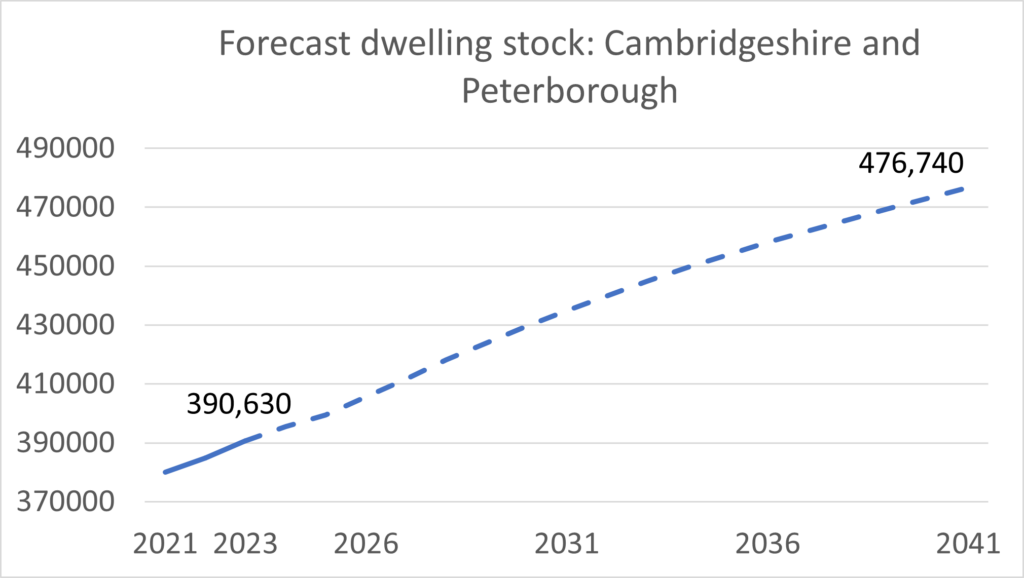
Cambridgeshire and Peterborough: mid-2023 population and dwelling stock estimates and 2023-based population and dwelling stock forecasts
Cambridgeshire County Council’s mid-2023 population and dwelling stock estimates are available for districts, wards and parishes (based on 2023 boundaries). They present the most recent estimate of the size of the usual resident population and number of dwellings. These estimates are produced using data from Census 2021, mid-2021 and mid-2022 population estimates as well as local data sources, such as health statistics, school rolls, electoral registers and housing completions data.
Cambridgeshire County Council’s population and dwelling stock forecasts are available for districts and wards (based om 2023 boundaries) and extend to 2041. They use the most recent mid-year population and dwelling stock estimates as a starting point. The forecasts are ‘policy-led’, so that they are consistent with planned levels of house-building, informed by the most recent housing trajectories, at the time the forecasts are produced, published by each local authority, with some interpolation and extrapolation by Cambridgeshire County Council. Recent historic demographic trends in births, deaths and migration are also taken into account in the population forecasts.
Please refer to the methodology note for the mid-2023 estimates and 2023-based forecasts for further details.
Cambridgeshire and Peterborough Mid-2023 Estimates (xlsx, 135KB)
2023-Based Population Forecasts (xlsx, 152 KB)
2023-Based Dwelling Stock Forecasts (xlsx, 56KB)
Cambridgeshire and Peterborough: mid-2023 to mid-2031 population pyramids
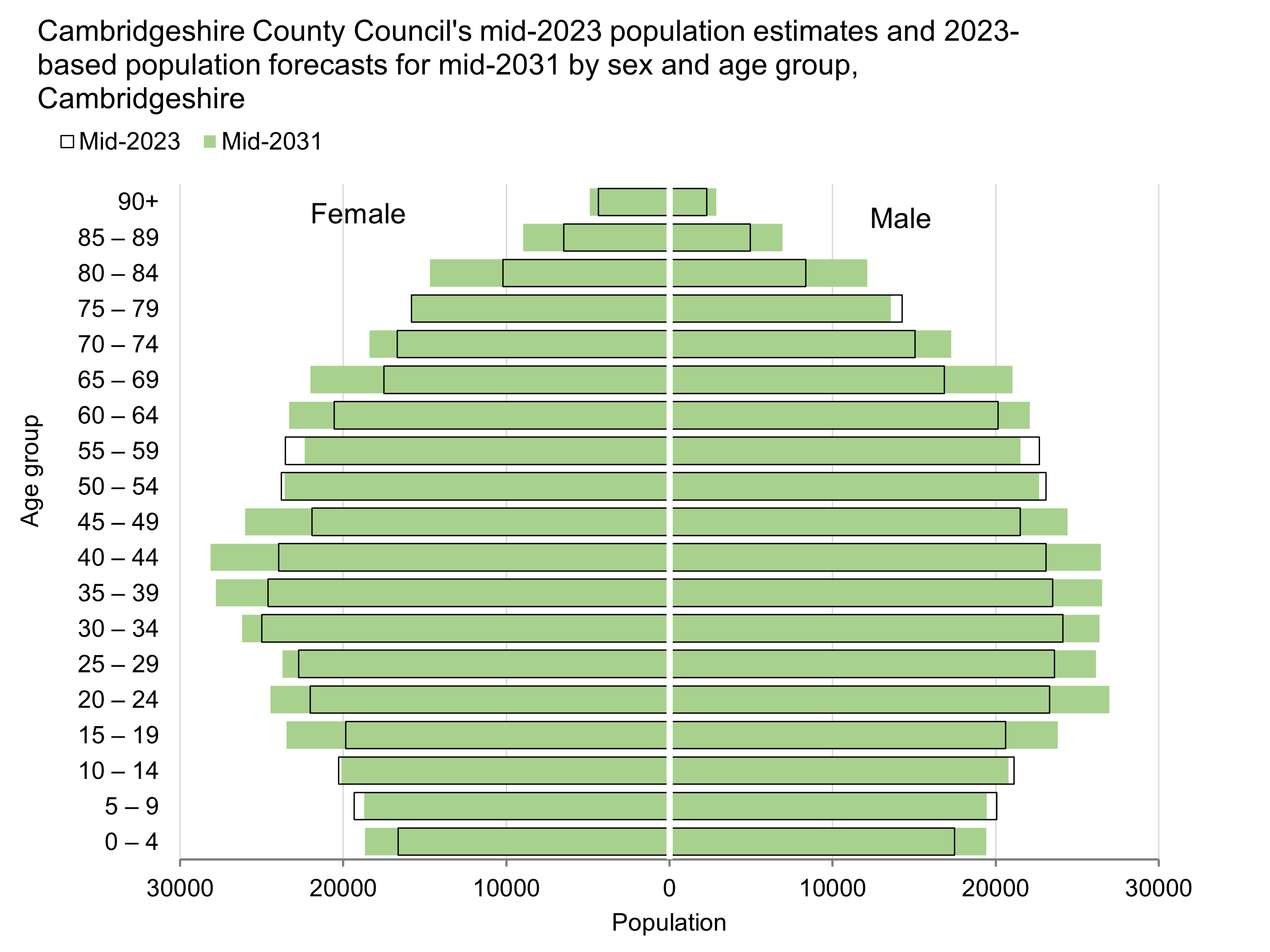
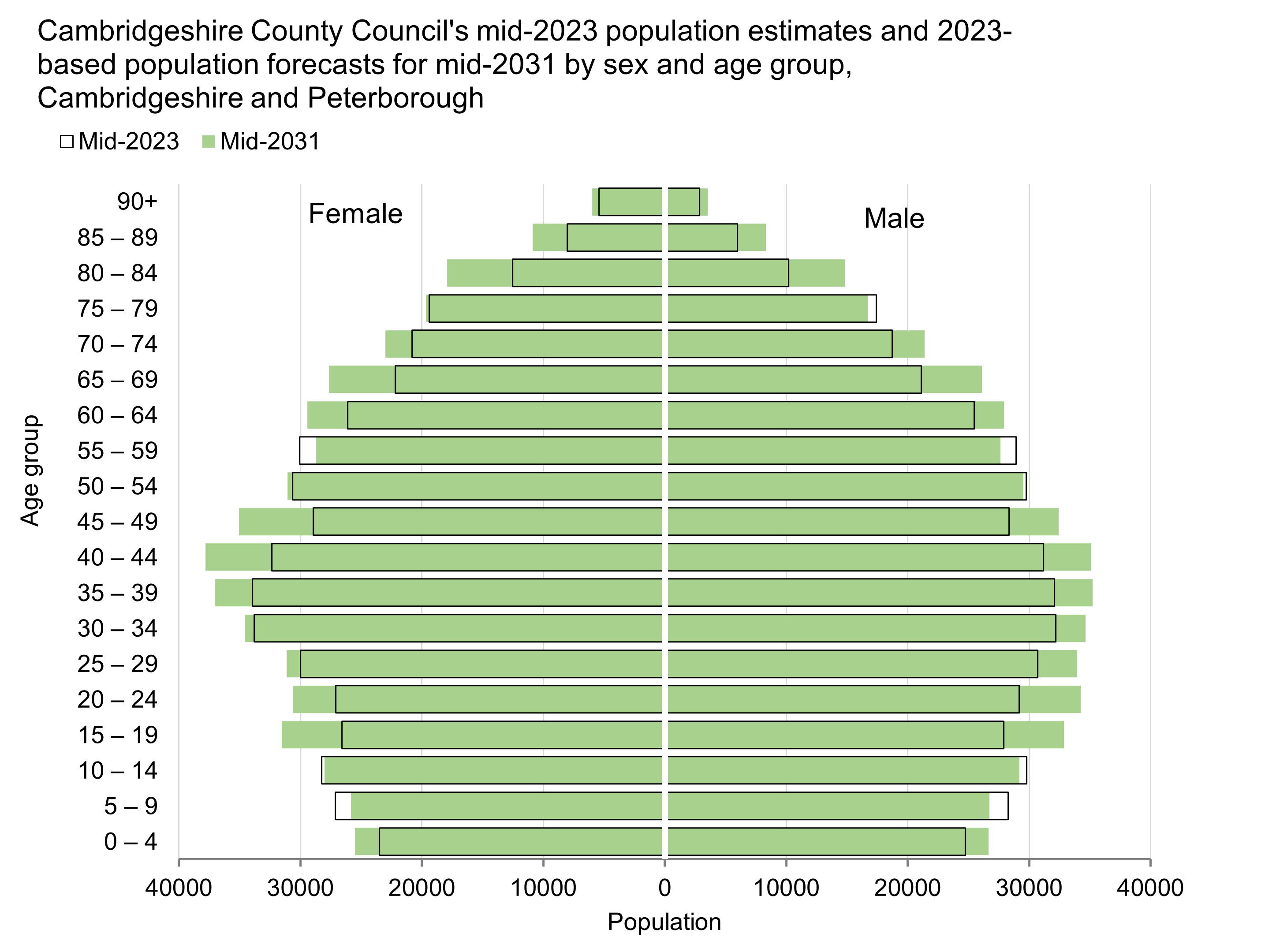
Cambridgeshire and Peterborough: ward maps of population change 2023 to 2031 – Coming soon
Cambridgeshire and Peterborough estimates and forecasts: previously published datasets
Earlier publications of Cambridgeshire County Council’s population and dwelling stock estimates and population and dwelling stock forecasts are available under the population section of the document library.
Historic Population
Importance of historic population records
The Census in the UK has been conducted every 10 years since 1801. Over this time there have been numerous changes to the administrative boundaries, such as the amalgamation and deletion of wards and parishes, or the creation of new ones. These occur for a range of reasons, but usually to better distribute the population for administrative purposes.
Without knowledge about boundary changes it can be difficult to understand changes observed in populations, or make comparisons of areas over time. For example, moving a parish boundary may cause a population to increase on paper, within a given parish, but only because part of the population of a neighbouring parish has been incorporated, and not because a sudden influx of new residents.
The full dataset can be found on our Open Data Portal.
Local records
Cambridgeshire County Council have tried to keep a record of the changes to parishes over time, and the estimated populations as published by each Census, since 1801. This way we are better able to explain apparent changes to the populations estimated by each Census. You will find the most up to date versions of these records on our Open Data Portal.
Interactive Report
Use the drop down menus above to select between different wards and districts.
